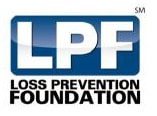Building a successful career in loss prevention has always been predicated on the commitment to professional growth and development. Working in a business as dynamic as retail, it is essential that we remain flexible in our methods and progressive in our approach to a global retail market. As the business moves forward change comes quickly, and our skills and abilities must evolve to meet the needs and expectations of a new professional standard.
But true growth must be built on a solid foundation. Especially when we consider the pace of change, we find that success is largely based on the refinement of the fundamental principles that anchor our skills and our decision making. By expanding on our foundation of knowledge, we give ourselves a stronger and more stable base to build upon. We reinforce our futures by broadening our opportunities.
Use of Counterfeit Currency
While creating counterfeit currency is in and of itself a crime, those who knowingly pass counterfeit money would be committing an act of fraud by passing a false form of tender. As technology has evolved and different tools have become available, counterfeiting has developed into a growing problem for retailers.
As a key side note, it is important to recognize that “paper” currency isn’t typically made from paper. The material or “substrate” used in most government currencies is actually a blend of cotton and linen, with polymer threads laminated between and throughout the currency. This process cannot be duplicated with copiers and printers. Since most who attempt to counterfeit currency will utilize paper products when creating their fraudulent bills, this becomes the basis more many products used to detect counterfeit currency.
Counterfeit Detector Pens
A Counterfeit Detector Pen is a common and inexpensive screening device. The pen is a felt tip marker containing an iodine solution that can be used to help identify computer generated counterfeit bills. The iodine solution found in the detector pens reacts with starch, which is commonly found in the wood-based copy paper used in most printers.
Detection pens are easy to use and require minimal training. The sales associate simply uses their counterfeit detector pen to put a small mark on the bill. If the bill is counterfeit and the paper is wood-based, the iodine in the pen solution will react with the starch and leave a dark brown or black mark. If the bill is authentic and the paper is fiber-based, there won’t be any starch and the pen will not leave a mark. (Occasionally manufacturers of counterfeit detector pens will add a biodegradable pastel coloring to the iodine solution so that users can easily see which bills they have already screened—the pastel coloring usually fades within a day or so.)
Keep in mind that while counterfeit detector pens are generally reliable tool for identifying counterfeit bills, they are not 100% accurate and can occasionally cause false positive and false negative markings. This can be especially true when applied to “washed” bills, or considering the paper options that are currently available.
UV Counterfeit Currency Detectors
Another method for combating counterfeits involves the integration of ultra-violet (UV) fluorescent materials into the bills themselves. UV counterfeit currency detectors are used to detect special inks in the bills that only appear under the proper wavelength of UV light.
Successfully implementing UV security features into a national currency is a two-fold process. The first step entails printing currency with ultraviolet inks. UV inks specified by the U.S. Bureau of Printing and Engraving must utilize UV-fluorescent phosphors which can produce a reaction when placed under ultraviolet light, while at the same time remaining hidden when viewed under normal lighting conditions. When exposed to UV light, the UV ink changes its appearance and becomes easily visible to the human eye.
Using a UV counterfeit currency detector is among the least expensive solutions to aid in combating counterfeit fraud. With a relatively low cost and an easy training process, it is a practical approach for most businesses. The devices are easy to use: since they are human-readable, employees need only to place a bill underneath the UV light and identify the glowing security feature to confirm that it is a valid U.S. bill.
Counterfeit Detector Scanning Machines
Counterfeit detector scanning machines are also widely available and used throughout the retail industry. These specialized machines are designed to scan individual bills for counterfeit properties through various detection methods. By using magnetic, Infra-red or stored image chip technology, counterfeit detectors can quickly detect counterfeit bills.
By capitalizing on opportunities to enhance our knowledge and education, we are making an investment in our own future. To learn more about developing your leadership skills and the certification process, visit losspreventionfoundation.org.
